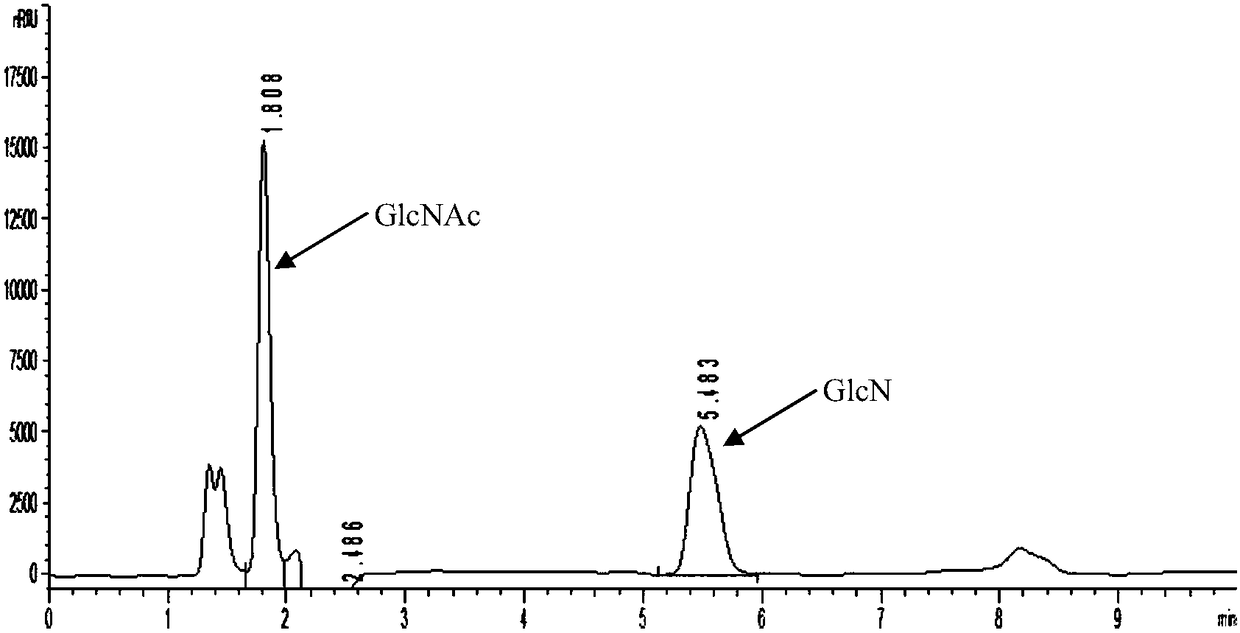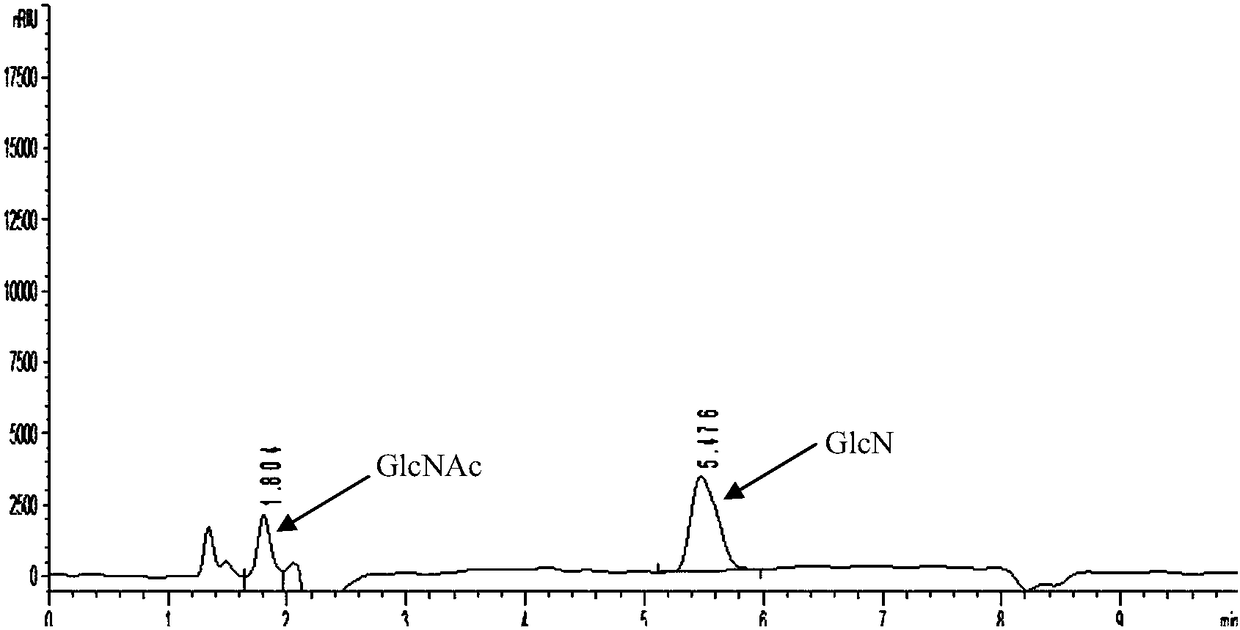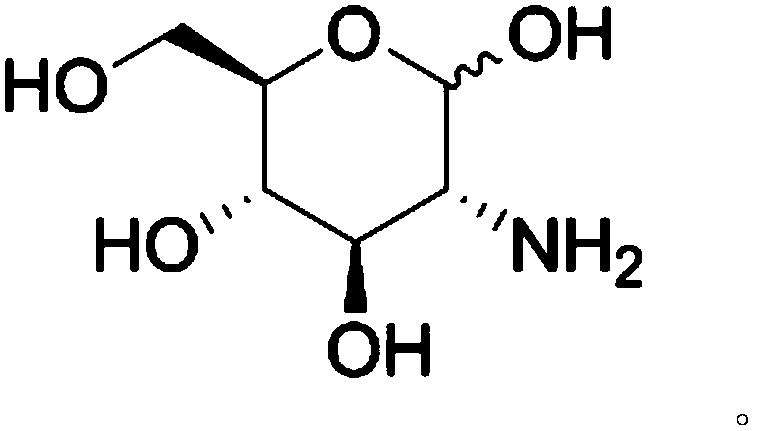Method for producing glucosamine
A technology of glucosamine and glucose, which is applied in the field of genetic engineering, can solve the problems of being unsuitable for people with seafood allergies, easily causing allergic reactions, and serious environmental pollution, etc., and achieves the effects of being suitable for popularization and application, high product purity, and simple process route
- Summary
- Abstract
- Description
- Claims
- Application Information
AI Technical Summary
Problems solved by technology
Method used
Image
Examples
Embodiment 1
[0072] Embodiment 1, construct recombinant bacteria
[0073] 1. Construction of recombinant bacteria Ⅰ
[0074] The recombinant plasmid pBAD / HisB-EcDac was constructed. According to the sequencing results, the structure of the recombinant plasmid pBAD / HisB-EcDac is described as follows: the small fragment between the XhoI and EcoRI restriction sites of the vector pBAD / HisB is replaced with the double-stranded DNA molecule shown in Sequence 1 of the Sequence Listing. The DNA molecule shown in Sequence 1 of the Sequence Listing encodes the protein shown in Sequence 2 of the Sequence Listing. The protein shown in sequence 2 of the sequence listing is N-acetyl-6-phosphate glucosamine deacetylase derived from Escherichia coli (Escherichia coli), referred to as EcDac protein.
[0075] The recombinant plasmid pBAD / HisB-EcDac was introduced into Escherichia coli BW25113 to obtain recombinant bacterium I.
[0076] 2. Construction of recombinant bacteria II
[0077] The recombinant ...
Embodiment 2
[0087] Embodiment 2, application of recombinant bacteria to prepare glucosamine
[0088] 1. Preparation of bacteria
PUM
 Login to View More
Login to View More Abstract
Description
Claims
Application Information
 Login to View More
Login to View More - R&D
- Intellectual Property
- Life Sciences
- Materials
- Tech Scout
- Unparalleled Data Quality
- Higher Quality Content
- 60% Fewer Hallucinations
Browse by: Latest US Patents, China's latest patents, Technical Efficacy Thesaurus, Application Domain, Technology Topic, Popular Technical Reports.
© 2025 PatSnap. All rights reserved.Legal|Privacy policy|Modern Slavery Act Transparency Statement|Sitemap|About US| Contact US: help@patsnap.com



